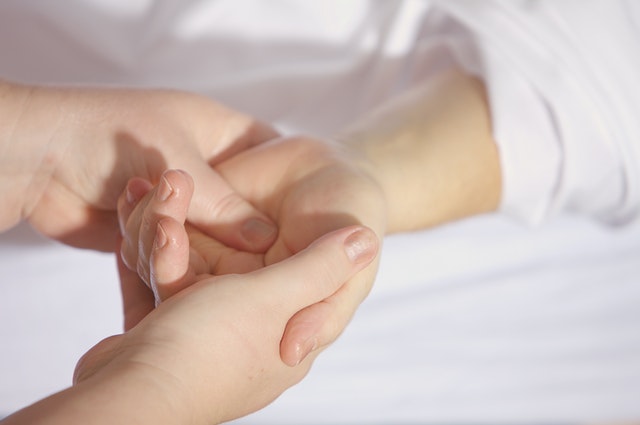When most people think of pain, they think of wanting it to go away – pain, after all, hurts, and there’s a reason for that. It can tell you whether you’ve pulled a muscle, if you have an infection, or if you have an abrasion or a broken bone that has to be treated. However, for many of us, the initial discomfort can last far beyond its usefulness. It’s preferable to repair an issue without being disabled by the accompanying suffering once we’ve identified it.
To assist reduce the pain, most patients opt for anti-inflammatory medications or even consider surgery or other medical procedures. However, there are several natural methods you can employ to minimize and ease your discomfort before getting there.
Cold and Heat Therapy

Remember spraining your ankle in high school in gym class or on the football field? In middle school, did you ever bump your head or hit your funny bone? Every time, those crack-and-shake ice packs appeared.
Ice packs relieve pain in two ways: first, they minimize swelling, which is your body’s natural reaction to trauma but can also obstruct healing. It also delays nerve impulses, which in turn slows the transmission of pain signals from the damaged location to the brain. Ice therapy is only recommended for 15 minutes at a time, with a 2-hour break between applications.
Heat should be used for aching muscles, stiffness, arthritis, and muscle spasms, on the other hand. You might use a heating pad or submerge the affected area in warm water to relieve the pain.
Herbal Remedies

Herbal pain relievers have been around since the dawn of time, but they have yet to be extensively researched. Keep in mind that herbs aren’t always safe, and these treatments aren’t regulated by the government.
The number of plants that can be used to relieve pain is enormous, but each one has a specific purpose. Capsaicin, for example, depletes a molecule that sends pain signals from the peripheral nervous system to the brain. Ginger contains phytochemicals that aid in the reduction of inflammation. Feverfew is used to cure headaches, stomachaches, and toothaches, but further research is needed to confirm its usefulness. St. John’s Wort may help with pain from sciatica, arthritis, and neuropathic pain. KavaKava is cooked in a tea for tension headaches; ginseng is reported to help with fibromyalgia symptoms; and kavaKava is boiled in a tea for tension headaches.
Turmeric contains curcumin, which helps to protect the body’s cells from free radical damage. Indigestion, ulcers, psoriasis, and even cancer are all treated with it. Cloves, on the other hand, are used to heal skin irritations and even fungal infections, though additional research is needed. This is because cloves contain eugenol, a natural pain reliever that is especially useful in dental procedures.
Exercise

Moving around may seem counterintuitive, but it can actually break the pain cycle, and one approach to increase mobility once the pain has subsided is to gently exercise the area, such as walking, cycling, or swimming. This is especially true for chronic pain illnesses like fibromyalgia and arthritis.
Endorphins are natural painkillers that present in your body. Exercising releases endorphins, which bind to opioid receptors and help inhibit pain perception.
Mindfulness

Meditation, yoga, physical therapy, and occupational therapy can all help you keep your mind and body connected on all levels. Breathing techniques won’t make the pain go away completely, but they can help you cope with the more unpleasant aspects of it by grounding you and restoring your sense of control over your own body, which pain can take away. You can take it a step further with guided therapies, which increase mobility and strength while also teaching you how to conduct daily tasks without triggering your pain sensors. Yoga is a relaxation routine that involves breathing exercises and stretching to help relieve low back and neck discomfort.
Mindful meditation has been shown in studies to alleviate pain symptoms, depression, and general quality of life.
Acupuncture

While acupuncture is an eastern treatment, studies have shown that the ancient Chinese practice of inserting tiny needles into the skin to cause the body to release serotonin can help to relieve pain. Acupuncture has been shown to aid with low back pain, neck discomfort, and knee pain in studies. Tension headaches can also fade away, and one study found that the exercise helped control chronic pain, among hundreds of other ailments.
Massage

While massage is well-known for its self-care benefits, it can also help to relieve pain by releasing tension trapped in the muscles and joints. It also helps to alleviate stress and anxiety. Soft tissue manipulation, which includes muscles, tendons, and ligaments, improves blood flow and reduces overall stress.
Conclusion
So, before you go to the doctor or sign up for expensive and time-consuming medical procedures, consider some of these at-home remedies. These strategies may provide an alternative to those seeking pain relief with fewer adverse effects than typical medication-based pain relief.
Keep in mind that they may not be as helpful as traditional approaches, especially when dealing with more acute pain or pain caused by certain, serious conditions. Do not use these treatments as a substitute for medical treatment, and always consult a doctor if you develop new pain.










